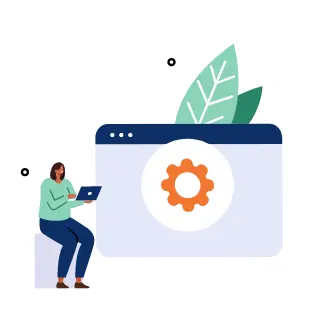Customers expect more and more self-service options, in other words that they can arrange many things independently. CloudSuite responds to this with advanced roles and rights structure for your customer. For example, the platform offers different user roles that allow users to have certain rights or restrictions. This includes ordering products with a supervisor's permission or only being able to place orders up to a certain amount.
If you have government institutions or multinationals as customers, it is often the wish that orders go through their own purchasing system. The OCI / PunchOut user selects products in the webshop and then the webshop places all contents of the shopping cart in the purchasing system. So you can serve every customer as desired.
For customers who sometimes need a helping hand, there are also internal user roles for the CloudSuite platform itself. For example, someone from the customer service or sales department can log in and view all customer specific prices, assortments and orders. You can create new customers yourself and place an order on behalf of the customer, because they first needed some advice over the phone.
Users can be linked to one or more customers. The user can log in on behalf of a customer in the webshop. This determines, among other things, the prices that he sees in the webshop.
User roles allow you to define different types of users. The defined rights apply to all users with the same role, which makes management very easy.
Guest purchases are very common for B2C webshops. Only necessary information is saved and no account is created. This removes the barrier and speeds up the purchase process.
In some organizations, there are many employees who make purchases on behalf of the company. If authorization is required for the order, the superuser of the relevant customer can approve the order.
As a superuser, an end customer can create and manage users themselves. In addition, the superuser can edit information about the organization, assign catalogs to users and define budgets.
Give your customers the ability to allocate budgets to specific users. A maximum order amount can be set for this, possibly in combination with a period (week, month or year).
Give customers who use their own purchasing solution, such as SAP or Ariba, access to create their order via the webshop. CloudSuite then forwards the order to the customer's purchasing system.
Give your employees the opportunity to view the webshop for all available customers to check prices, assortments and orders from these customers or to add an order on behalf of the customer.
This role is for account managers on the go to visit prospects and existing customers. Sales agents can register and activate new customers. They can also place an order on behalf of their own customers.
The blurred boundary between B2B eCommerce and B2C eCommerce has been a hot topic in recent years. In this blog, we delve deeper into this phenomenon: do we indeed see this blurring?
Read the blogWe believe that the world economy – and eCommerce in particular – is on the verge of a technological revolution as profound as the emergence of digital itself.
Download the whitepaperIncomplete product information or wrong stock status can frustrate your customer and, at worst, end a client relationship. Integrating your webshop with an ERP system can prevent this.
Read the blog

